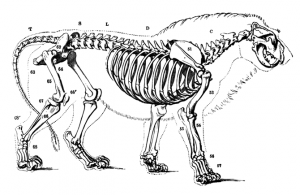|

Lion bones have taken at least a supportive role for increasingly diminishing tiger bones in terms of demands for the trade of Asian Traditional Medicine. Or perhaps a major role?
It is now estimated that a lion skeleton is worth $10,000 in the Asian countries supplying lion bone products. In 2010, a skeleton was worth perhaps $4,000 – so quite a big increase in a short time. South Africa has risen to the demand, and as with the rhino horn trade, is stimulating a ready market with a ready supply. This can only result for lions the same situation with rhinos – greatly increased levels of poaching.
South Africa has facilitated the following:
1. An export of 250kg of lion bones to Laos in 2009 (previous total 2000-2008 was 0);
2. An export of 586 bones to Laos in 2010 (previous total 2000-2009 was 0);
3. An export of 14 live lions to Vietnam in 2010 (previous total 2000-2009 was 2);
4. An export of 29 skeletons to Laos and 19 to Vietnam in 2010 (previous total to Laos 2000-2009 was 5 and Vietnam was 0);
5. An export of 90 teeth to Laos in 2010 (previous total to Laos 2000-2009 was 0)
6. An export of 54 lion trophies to Laos (previous total to Laos 2000-2009 was 1).
Surely South Africa is aware of the impact that their trade in wildlife products is having on the significant escalation of poaching of rhinos in their country and on the continent? And surely they might see that their facilitation of the lion bone trade could have similar impacts on increasing the demand for lion products and thereby also stimulating poaching? Or will South Africa continue to insist that their trade is considered legal under CITES and therefore will not have broader lion conservation consequences?
LionAid will request clarification from South Africa, but we already anticipate that this communication will not be acted on. Perhaps we will be pleasingly proven wrong.
Image: etc.usf.edu
| 



